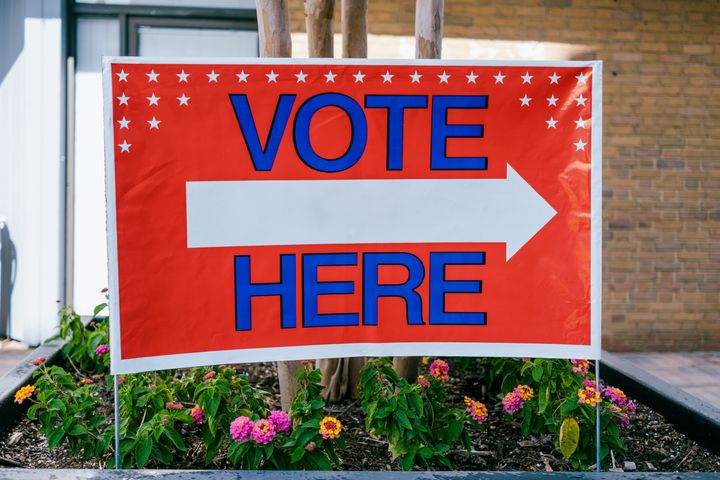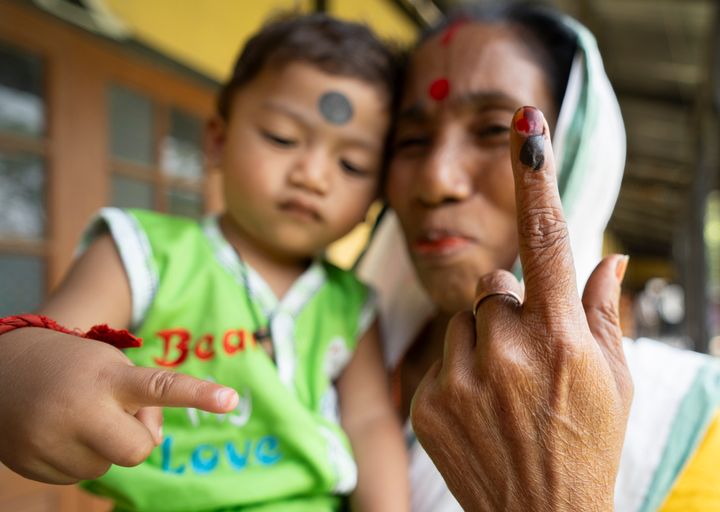
People all over England and Wales have been trying to come to terms with a few new ways of voting today in the local elections.
Londoners now have to use the first-past-the-post system to vote for their mayor for the first time, and mandatory photo ID is also needed for people to pick up their ballot papers in any elections
But it’s not just the Brits heading to the ballot box this year.
In fact, 2024 is a historic year for elections, with two billion people around the world heading to the ballot box.
So here’s a look at just how different other countries’ systems can be...
1. India marks people’s fingers with ink
To show someone has cast their vote in the election and to prevent them from voting more than once, officials put indelible ink on voters’ left index fingers.
The ink is applied after they cast their vote at the electronic voting machine.
This is a tactic used in India since the 1950s, although many countries around the world have also used election ink at some point.

2. Vote or get fined in Australia
Voting for Australian citizens aged 18 and over has been compulsory ever since 1924.
If they do not cast their votes, the government will contact them via email or text asking why.
They will be fined $20 (£10.39) – but that amount climbs in value to $220 (£115.68) unless they pay it off swiftly, or if it isn;t the first time the voter in question has missed the ballot.
For most of the last century, voter turnout in Australia has been at around 95% – although it has declined in recent years to just below 90%.
Still, that’s a long way off the 69% average seen in OECD countries.
Argentina also imposes fines on those who do not vote, while in Brazil, people need to show they’ve voted to secure a passport or go to a public university.
Singapore removes those who do not vote from the electoral roll.
3. US astronauts can vote from space
Yes, just because someone is not physically on Earth does not mean they are disenfranchised.
The US made it possible for NASA astronaut David Wolf to vote from a Russian space station in 1997.
And as technology has advanced, it has only got easier for astronauts. NASA’s Dr Kate Rubins voted in 2016 and 2020 from the International Space Station, through a secure electronic ballot 250 miles above our planet.
Astronauts do still have to obey the time limits for the polling hours back on Earth though.

4. Estonians can vote from anywhere with internet
Estonia’s citizens have been able to vote online from anywhere since 2005, when it became the first country in the world to offer e-voting to the public.
Going to voting booths is still possible, but e-voting has become increasingly popular over the last two decades.
In the 2023 elections, more than half of the votes were cast online.
Each citizen needs an ID card and a PIN to log into the system and cast their vote – although their identity is removed from the ballot before it reaches the official count.
5. North Koreans do vote – but there’s only one candidate
North Korea is known as a dictatorship state, with its totalitarian leader Kim Jong Un leading the secluded country his father Kim Jong-il died in 2011.
But, there are elections every five years and every person is expected to vote.
So what’s the catch?
Well, there’s only one name on each ballot paper, and a box next to “yes” and “no”.
Abstaining or voting no would be seen as treason – and the officials would definitely know who voted what, as the booths are not in private and “no” votes have to be cast separately.
Seen more as a propaganda exercise rather than a democratic right, citizens are also expected to line up early to take part in the “election” to show their patriotism.
State media says 0.09% voted against candidates for provincial councils and 0.13% against city council candidates.
The next election in North Korea was expected to take place in April or May this year, but they appear to have been delayed or cancelled.

